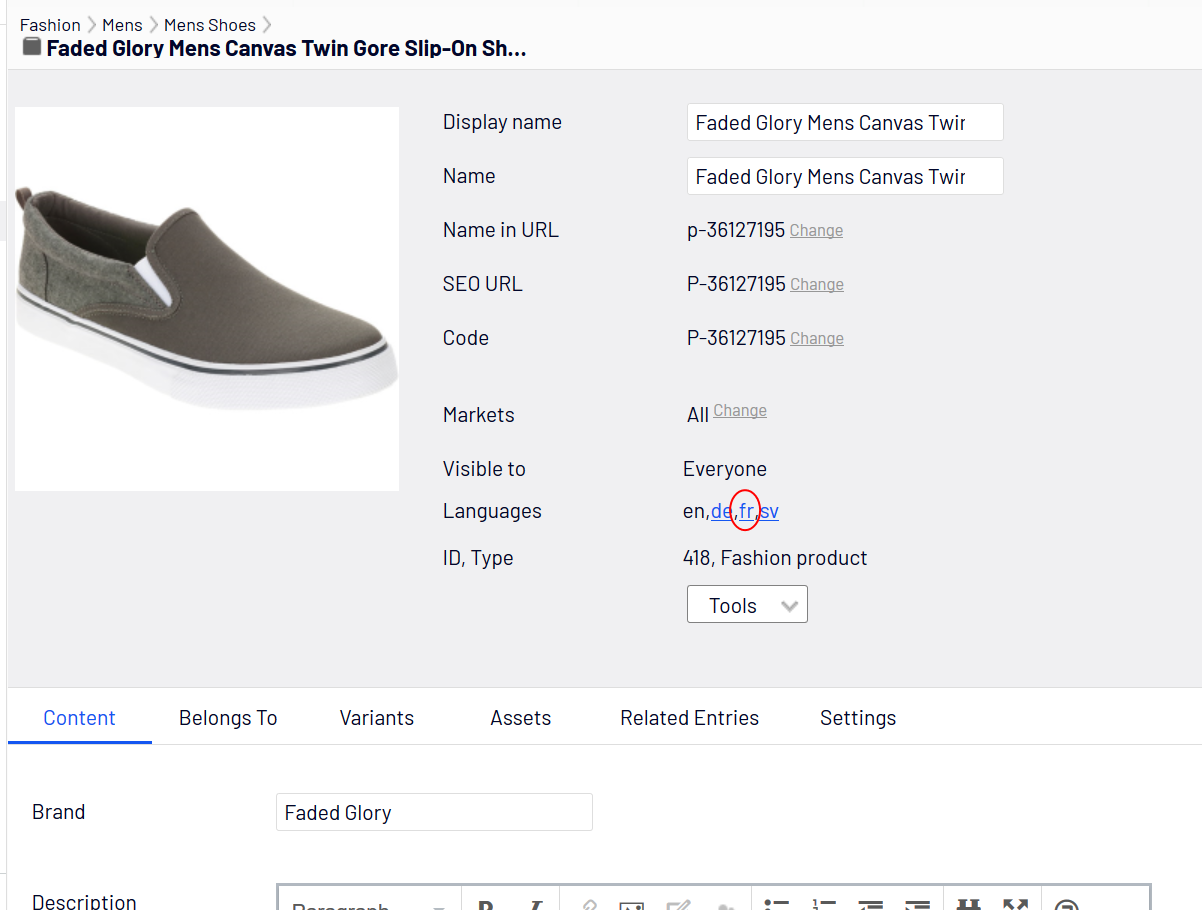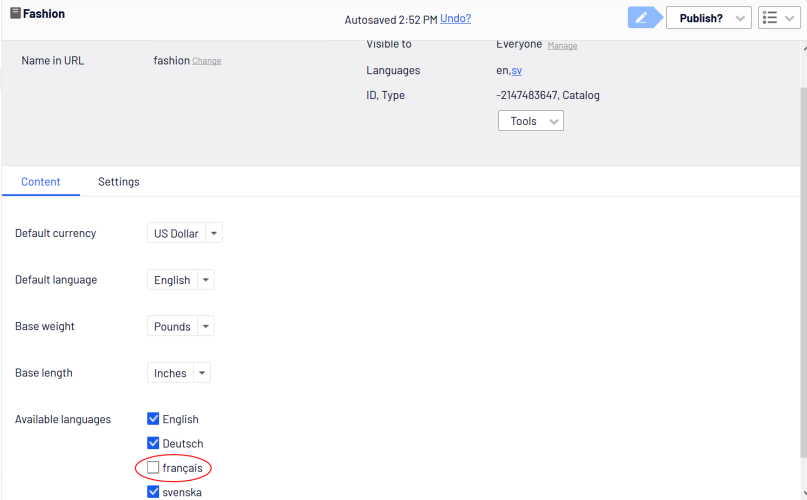 Managing languages in Optimizely Commerce
Managing languages in Optimizely Commerce
Usually, a website has a default or master content language set up during installation. You can set up languages for catalog entry content, such as product Commerce: various forms of merchandise that you can display and purchase from the public site, including products, variations/SKUs, bundles, and packages. Also known as a catalog entry. (SKU Commerce: Stock keeping unit; corresponds to a purchasable product with specific characteristics. For example, a product line of shirts has individual variations/SKUs for sleeve size, color, and collar size.) descriptions, for your website at the catalog Commerce: a top-level container for catalog entries such as categories, products, and variants (SKUs). level. This means that when you configure a language for a catalog, you define catalog entry descriptions in that language.
To work with multiple languages for Optimizely Commerce content, first enable the languages in the CMS admin and edit views. Next, language-specific fields appear, ready for translation in edit view; product descriptions that are not yet translated appear empty if they are displayed on the front-end site.
Translating catalog content is similar to translating CMS content, such as pages and blocks. Optimizely uses specific language settings for catalogs Commerce: a top-level container for catalog entries such as categories, products, and variants (SKUs)., markets One or more countries, regions or customer groups, to which you want to apply languages, catalogs, currencies or promotions. The market features support targeted merchandising and personalization., and payment and shipping methods in Optimizely Commerce.
Enabling a language for catalog content
- Activate the language in the CMS admin and edit view, as described in Managing website languages.
Enable the language in edit view to make it available for editors to translate content, and to make the website's start page available in that language, for proper display of translated content.
- Enable the language for the catalog to which you want to apply the new language:
- In the Catalog edit view, open the catalog for which you want to add a language in the All properties editing view.
- In Available languages, select the newly-added language.
- Publish the catalog changes.
Translating content for catalog entries
- In the Catalog view, select the desired catalog entry to translate in the catalog tree.
- Click Edit in the context menu for the selected entry, or select the entry to open the All Properties editing view.
- In the header next to Languages, select the desired language for translation. (Enabled languages are listed.).

- Edit the available properties, and follow the content publishing flow to save and publish the translated catalog entry information.
When you translate content, have the original content open in another browser window for comparison. You can also copy and paste the original content into the text area where you are working, as reference.
Switching language and viewing language versions
When editing translated content in the All properties editing view, you can switch languages by selecting the desired language in the Header. The user interface reloads, displaying the content in the selected language. See Translating content.
Editing global properties
Depending on your implementation, some properties may be globally shared and can only be edited in the master language The language in which the first version of content is created.. See Translating content.
Setting the user interface language
- To set the user interface language for Catalogs and CMS:
- Select your user profile name in the upper right corner.
- Click My Settings then the Display Options tab.
- Select the language of your choice and click Save.
- To set the user interface language for Commerce Manager One of several main user interfaces in Optimizely Commerce. This UI area, available from the top menu after logging in, provides screens for managing markets, customers, catalog, orders, and so on. You can manage the information on some Commerce Manager screens in other, newer user interfaces. Where possible, we recommend using the newer ones.:
- In the upper menu of Commerce Manager, click Change Language.
- Select the language.
- Click OK.
